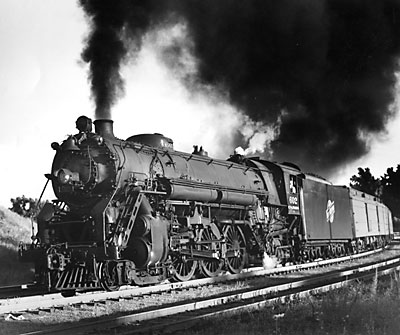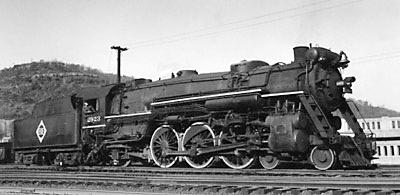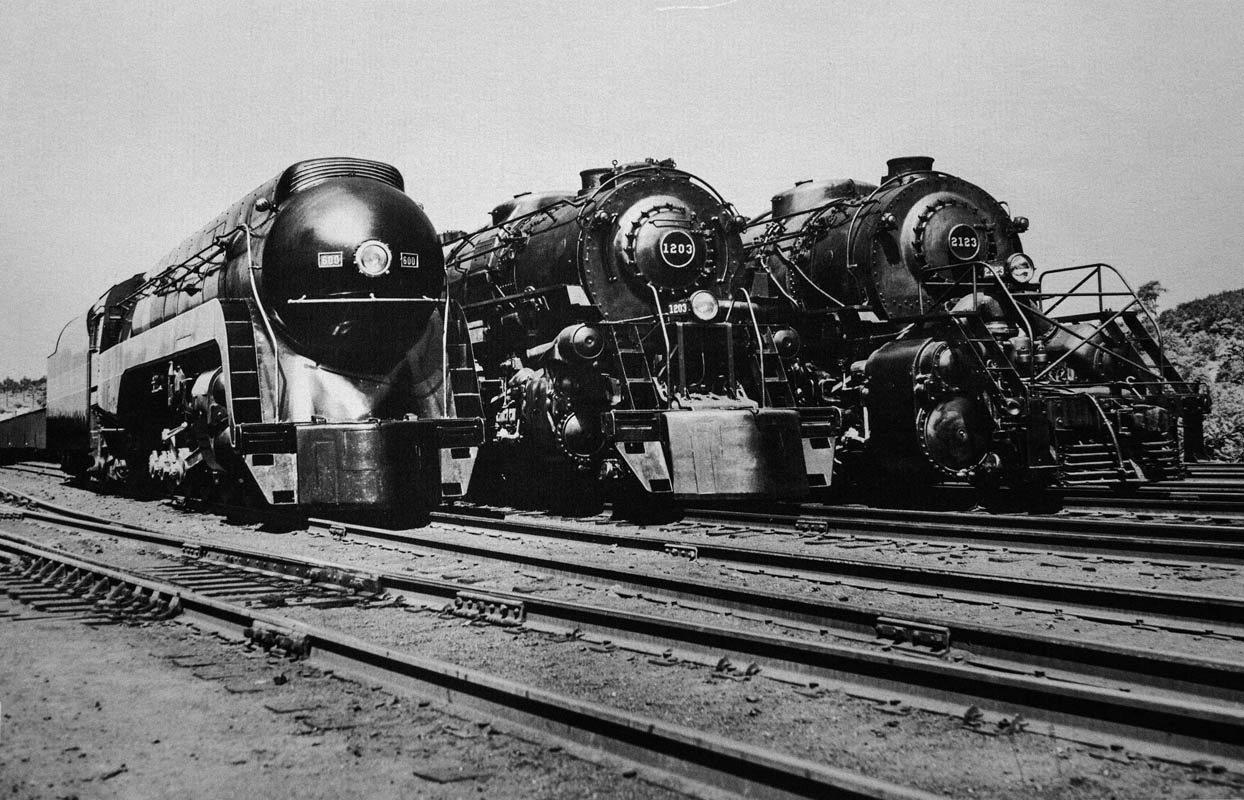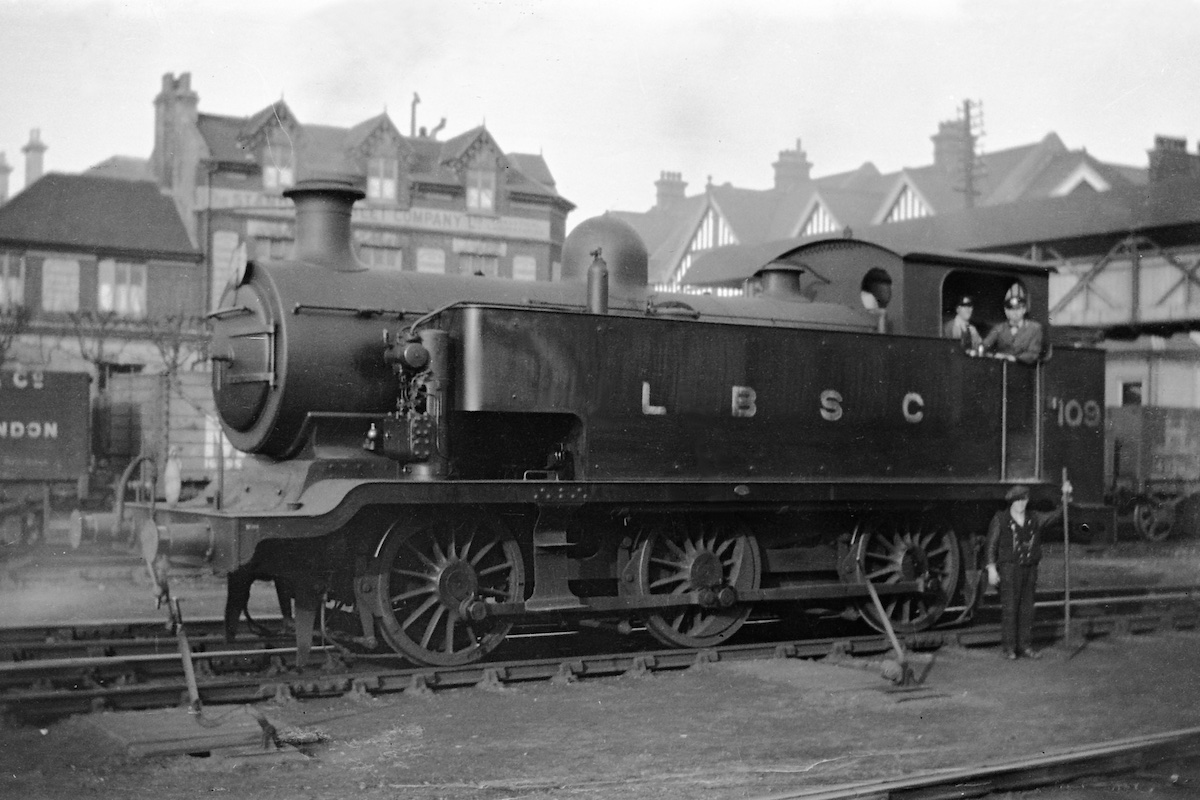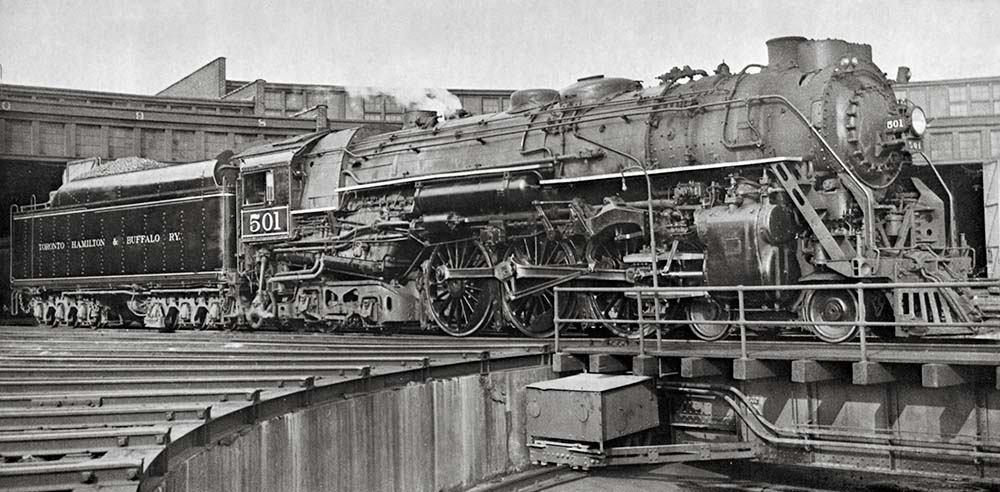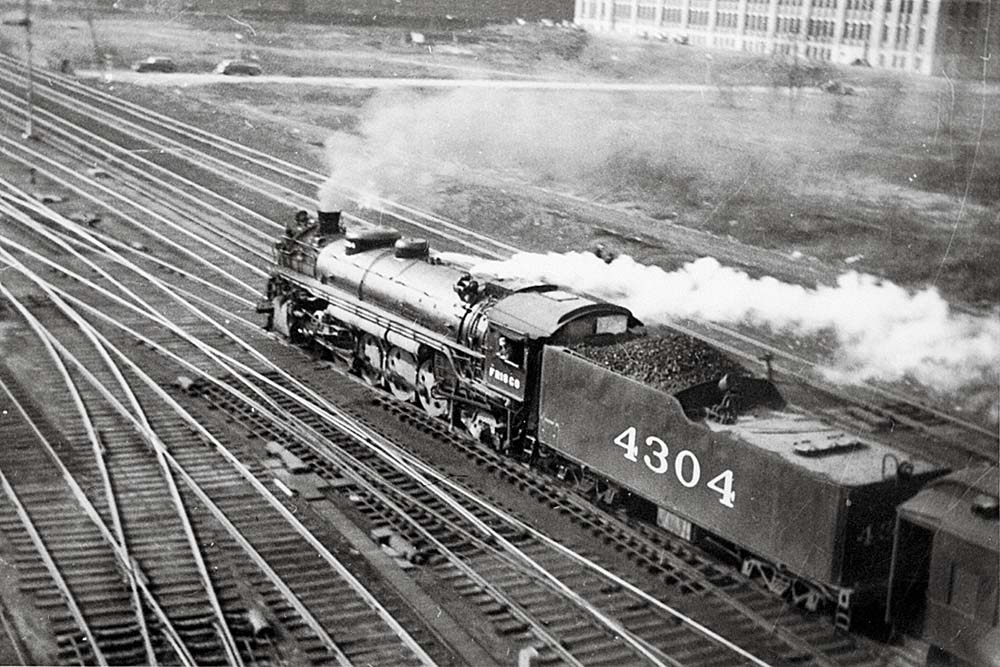Like the earlier passenger-hauling 4-4-2, the 4-6-2 had a large, deep firebox located behind the rear driving wheels. The combination of a big grate and large furnace volume produced a firebox with excellent combustion conditions. Given that the locomotive’s long boiler had at least 50 percent more heating surface (via longer tubes and flues) than either the 4-6-0 or 4-4-2, the 4-6-2 had both greater tractive effort and more horsepower than its two predecessors.
This increased power gave it the ability to either handle heavier trains on existing schedules, or haul the same-sized trains on faster schedules – especially in hilly territory. It was this latter capability that most interested the railroads in 1902 when the Pacific was first introduced in America.
By 1910, with the introduction of steel passenger cars, train weights began to increase to the point where 4-4-2s and 4-6-0s could no longer do the job. The 4-6-2 then became the standard passenger engine. Within a few years, just about any railroad offering passenger service of any significance owned one.
Eventually, more than 6,500 were built.
Interestingly, the first 4-6-2 was not delivered to an American railroad. Built by Baldwin, it went to New Zealand in 1901. The first American model was delivered by Brooks to the Missouri Pacific in 1902 for service in the Ozarks – hence the type’s name, Pacific.
Beginning with the widespread introduction of superheating in 1911, steam locomotives went through a series of rapid technological advances that, in less than a decade, boosted their size and power significantly.
As the preeminent passenger engine of the day, the Pacific was one of the locomotive types that benefited most from these developments. In quick succession it received a superheater, piston valves, outside valve gear, modern radial trailer truck, feedwater heating, and thermic siphons.
The last 4-6-2 was built by the Canadian Locomotive Co. for Canadian Pacific in 1948.
The Pacific did have some competition. It was not well-suited for handling trains in mountainous territory without doubleheading, and new eight-coupled designs began to make inroads there. By 1920, the 4-8-2 was increasingly used to hold down passenger assignments in demanding terrain.
By the late 1920s, railroads needed locomotives that could produce much greater power than the 4-6-2. The 4-6-4 and 4-8-4 were developed to meet this need, and they soon found themselves at the head of premier passenger trains. They did not, however, replace the great majority of 4-6-2s in service, which still found their share of work.
It was the diesel locomotive and the growing number of passenger train abandonments that ultimately spelled the end for the Pacific. Many remained in service until the very end of steam.





